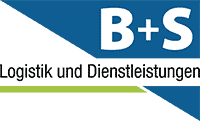Guest Post
Bielefeld, September 8th, 2021 – E-commerce logistics are complex. It is not only extremely dynamic and particularly consumer-driven, but also requires a decisive rethink: away from pallets and towards single units. The challenge of these small item units? The process costs are high – especially with the usually low margins in online trading, rising prices for space in Germany or a lack of skilled workers. The result is tremendous pressure to work more efficiently in order to reduce unit costs. An increase in efficiency can be achieved with a tailor-made IT solution, as e-commerce expert Thomas Finke knows. At the 4th DVZ conference “The right TMS as the key to forwarding 4.0”, he presented what such a solution can look like, whether it is better to build it in-house or buy it and why it should not end up being an island.
Systems change
It’s not just e-commerce itself that is changing – let’s just think of increased sales volumes not just since Corona and increasingly tense sales networks via marketplaces and platforms. As a result, previous IT systems are also being put to the test. Are they multi-client capable and available 24/7 to give customers insights into the processes of their fulfillment when they need it? Are process steps automated in order to achieve the speed that is so urgently needed? Do you work across departments in order to optimize processes from material flow to intralogistics to transport? Can different carriers be connected to accelerate the last mile? Questions after questions arise in the IT heaven of an e-commerce logistics service provider. If you notice that the previous systems do not meet these requirements for efficient e-commerce fulfillment, the greatest of all questions arises.
Your own solution or purchase of third-party systems?
If logistics service providers decide to develop their own IT solution, they should critically question in advance whether the necessary know-how is available in-house, the corresponding capacities are available and whether they would like to be used to set up their own software solution. Because one should not underestimate the effort of such an undertaking, even if the advantages of a specially developed solution are obvious. In this way, it can be individually adapted to your own workflow and business model. When purchasing a third-party solution, on the other hand, your own development capacities are spared. But simply purchasing a solution is not enough. The integration into existing IT landscapes is often enough a challenge. Because a logistics IT solution for online trading only develops its efficiency potential if it has robust interfaces to the Transport Management System (TMS), the Warehouse Management System (WMS), various shop systems and the carriers. Thomas Finke calls it an “island solution with interfaces”. The high interface costs in particular deter many customer companies. That is why Thomas Finke recognizes a trend towards standardizing interfaces for e-commerce. This so-called productization scores with standardized onboarding, the saving of resources and short implementation times, but has the disadvantage that you have to make compromises in terms of individuality and “customization”.
Isolated solution or do you prefer end-to-end?
Regardless of which variant logistics service providers decide together with their customers, Thomas Finke advises: “Especially in e-commerce, the connection to so many different systems is relevant that an isolated solution simply cannot serve – or only at very high development costs. Because it is not only important to get different order sources under one IT hat, but also to generate a continuous flow of information from the first to the last mile, from end customers to dealers and logistics service providers to CEP service providers and the deliverers. E-fulfillment thrives on integration. Because it enables efficient work that is urgently needed in order to reduce costs and meet consumer expectations. And the easiest way to achieve full integration is when you have the target market in mind and the needs of the customers in mind while developing an IT solution. In my opinion, the result must therefore be an end-to-end solution. “

